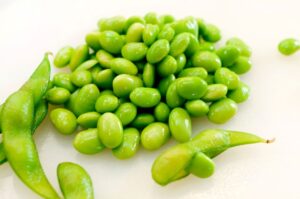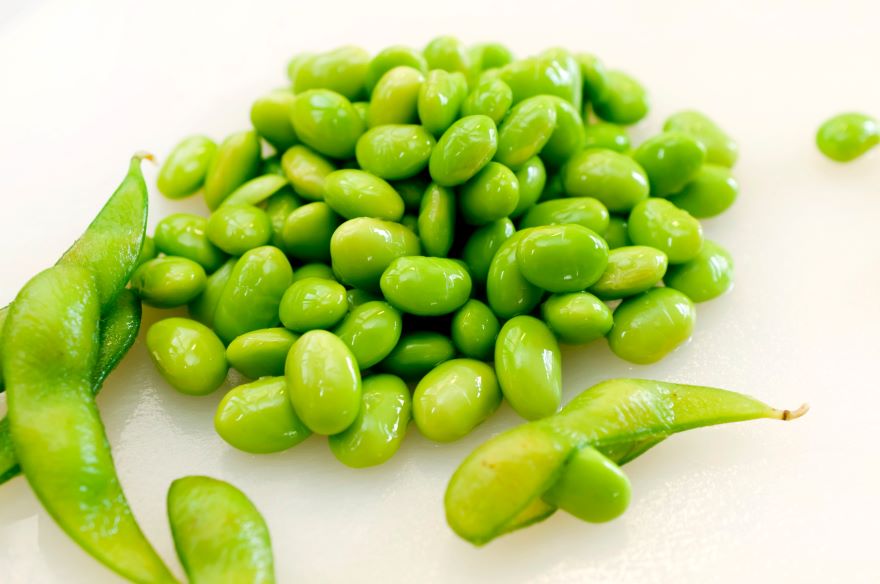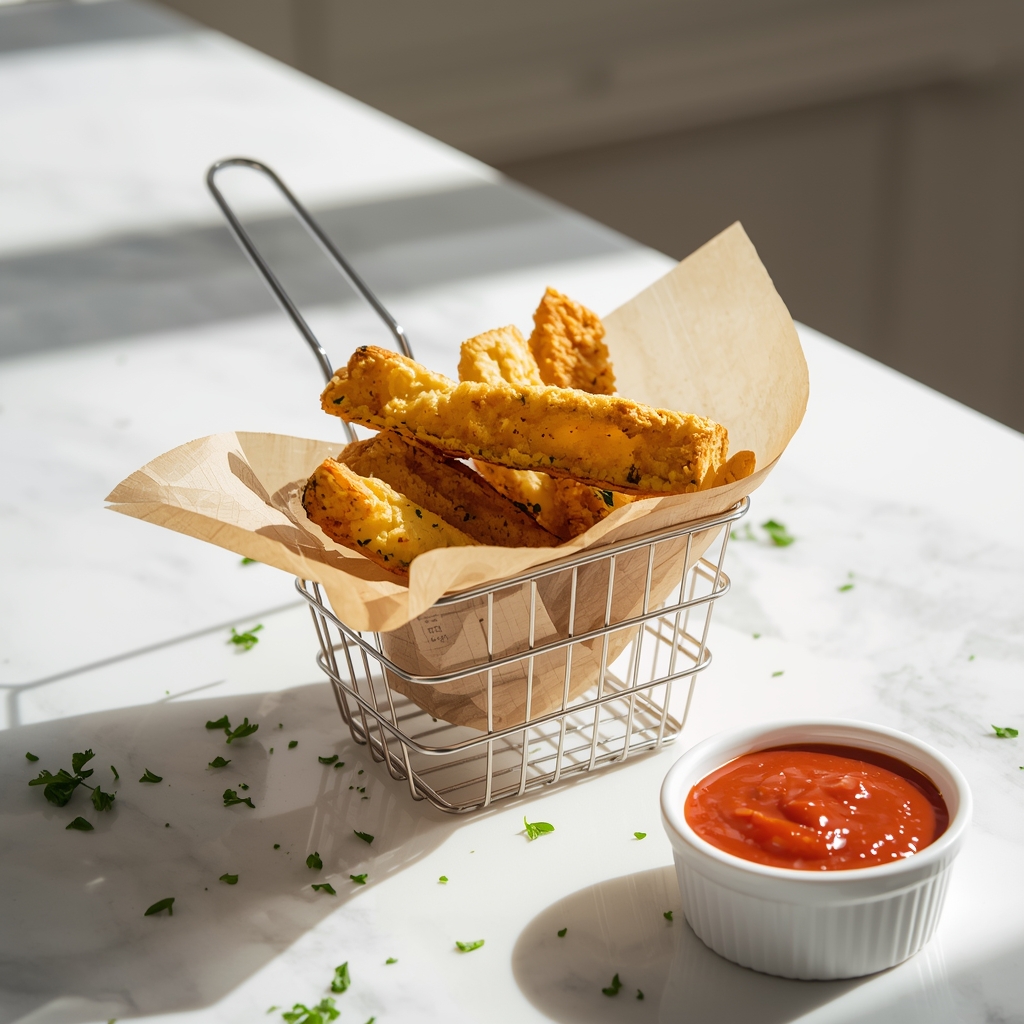After another busy week at work, grocery shopping was the last thing on my mind. But wandering through Costco’s produce section, I stumbled onto something that’s honestly changed our snacking game: Costco edamame. Who knew fresh beans from a warehouse store could be this good?
Remember when edamame was just that fancy sushi restaurant appetizer? Not anymore. Costco’s got both organic and regular varieties at prices that won’t destroy your budget. Bruce and I were skeptical at first—fresh beans from a warehouse store?
Turns out, we were completely mistaken. The quality rivals what you’d get at restaurants, but at a fraction of the cost. We’ve been trying to eat healthier without going broke, and these pack serious protein (comparable to meat, actually) while being incredibly convenient for meal planning.

What really surprised me was the variety. Multiple brands, different package sizes, and they’re always in stock. No more hunting through three different stores for decent fresh edamame that costs twice as much.
Bruce says I’ve become obsessed. But honestly? When you find restaurant-quality fresh food at warehouse prices that actually helps you eat better, why wouldn’t you stock up?
Why Bruce and I Choose Costco Edamame for Exceptional Value
When we first started buying Costco edamame, it wasn’t because we were on some big health kick—it was because we wanted something quick, healthy, and affordable to keep in the freezer. Costco just happened to check all those boxes. The price difference alone is worth the trip. Instead of paying a small fortune for those tiny grocery store packs, we can bring home enough edamame to last weeks without feeling like we’ve overspent.
One of our favorites is the Imperial Garden Organic Edamame. It comes in a huge six-pound bag that’s split into ten smaller steam-ready packs. For us, that’s perfect. We can grab a bag for a quick snack, toss one into a stir-fry, or steam a couple for a weekend movie night. No waste, no hassle.
Another thing I’ve noticed—Costco keeps things simple. Once we find something we like—this edamame, for example—we stick with it. Costco keeps the same item number, so we can grab it without thinking. It saves us from wandering the aisles wondering if they’ve swapped it out for something cheaper or not as good. When you’re just trying to get in and out, that kind of reliability is worth almost as much as the deal itself.
Product Variety and Options We Rely On
Bruce and I regularly purchase Nature’s Classic Edamame, which provides another excellent option for Costco members like us seeking quality without the premium cost of organic certification. This conventional variety maintains the same rigorous quality standards we have come to expect while offering additional cost savings that help stretch our household budget further. I appreciate that the consistent availability of both organic and conventional options ensures that Costco can serve our evolving preferences without compromising on the freshness or taste that initially attracted us to their edamame selection.
I have learned to monitor seasonal promotions and monthly newsletter deals that frequently feature edamame products, providing additional opportunities for Bruce and me to maximize our savings during our shopping trips. When I track these promotional cycles throughout the year, I often discover that we can stock our freezer with months of healthy snacks at even more attractive price points. I value that the warehouse club’s commitment to rotating featured products ensures that edamame regularly appears in promotional offerings, giving us multiple chances annually to take advantage of these bulk savings.
Cost Comparison Benefits We Have Calculated

After keeping an eye on prices for a while, I’ve realized that buying edamame at Costco can save anywhere from 20 to 40 percent compared to my local grocery stores. When you’re trying to eat more plant-based and keep protein-rich foods on hand, that difference really adds up.
Edamame has become a regular part of my meal rotation, so the bulk packaging works perfectly—I don’t have to restock as often, and the savings pile up without me even noticing until I check my receipts.
Our Assessment of Costco Edamame Product Selection and Quality Standards
The Okami Organic Edamame from Costco has quickly become my favorite. The soybeans are non-GMO, grown using strict organic practices, and they just taste fresh. It’s clear they’re picky about quality—every bag I’ve bought has been consistent, and that’s not something I can say about every brand I’ve tried. The result is edamame that Bruce and I consistently find delivers optimal texture, flavor, and nutritional value that meets the high expectations we have developed for our household purchases.
Quality Standards That Stand Out
Here’s something that really impressed me: Costco doesn’t just pick good suppliers and call it a day. They’re constantly testing products and actually paying attention to what customers say. I’ve purchased their fresh edamame probably a dozen times now. Every single batch has been spot-on—crisp, vibrant, and properly stored.
You know how some stores seem to let subpar products slip through? That just doesn’t happen at Costco. I think it’s because they know their reputation depends on consistency. With fresh produce especially, there’s no room for error. One bad batch of wilted, poorly handled edamame and customers notice immediately.
You can tell immediately when you open the package—bright green beans that actually have some snap to them. No mushy, sad-looking edamame here.
Costco’s clearly got their storage and transport figured out. It might sound boring, but when you’ve bought wilted produce from other stores, you appreciate a place that just gets the basics right every single time.
Sourcing and Supplier Relationships We Value
I like that Costco gets its edamame from farms that care about how they grow it. It’s not just about taste—though it’s always fresh—but about knowing it’s handled right from the start. Even when the weather’s been rough, the bags I pick up seem just as good as the last ones. That kind of consistency—paired with responsible farming practices—makes it easier to keep choosing their products with confidence.

Nutritional Profile of Costco Edamame That Benefits Our Household
Protein Powerhouse We Count On
Half a cup of shelled edamame gives roughly 11 grams of protein, and you’d never guess it from such a small serving. It’s one of those plant foods that quietly does the job of meat, right down to the full set of amino acids your body depends on. I’ve thrown it into salads, had it on its own with a bit of salt, and even tossed it into stir-fries—it works in just about anything.
Essential Vitamins and Minerals We Need
Edamame isn’t just about protein—it’s loaded with other nutrients that are easy to miss in a typical diet. A single serving gives a good boost of fiber, iron, calcium, and potassium, which is a nice bonus if you’re trying to get more of those without turning to supplements. It also has vitamin C, folate, and magnesium, all packed into a snack that tastes far better than most of the processed options sitting in the snack aisle.
Low-Calorie Nutrient Density We Appreciate
A whole cup of edamame comes in at under 200 calories, which is pretty great for something that actually leaves you feeling full. It’s naturally gluten-free, making it a smart choice for a wide range of diets. The protein and fiber do their job, so you’re not looking for another snack half an hour later. I’ve tossed it into dinners and eaten it straight from the bowl—either way, it’s hard to go wrong.
How I Prepare and Cook Costco Edamame
My Preferred Steaming Method
Most of the time, I just steam it. I’ll throw the pods or shelled beans into a steamer basket over boiling water, cover them up, and let them go for about five minutes—eight if I’ve got a bigger batch. They come out bright green and tender but still have a bit of bite, which is exactly how I like them.
My Quick Microwave Preparation
When I’m short on time, I just toss the edamame into a microwave-safe bowl with a splash of water, cover it, and cook on high for about five minutes. I let it sit for a minute so the steam can finish the job—and so I don’t burn my hands—then drain and season.
If you love incorporating edamame into your meals, you’ll love the Cuisinart CSB-179 Smart Stick Hand Blender. This versatile tool is perfect for blending up edamame-based dips or adding a smooth texture to soups and sauces. It’s compact, easy to use, and perfect for quick meal prep.

Cuisinart CSB-179 Smart Stick Variable Speed Hand Blender, Stainless Steel
- SUPERIOR FUNCTION: Versatile and durable, the Cuisinart 300-watt Smart Stick variable speed hand blender switches from low to high speed quickly
- MUST-HAVE FEATURES: Comfort-grip handle with push-button for continuous action and variable speed slide control
- EASY TO USE: ON/OFF switch with lock/unlock button and 8-inch stainless steel blending shaft for easy puréeing, emulsifying or whipping
- INCLUDED: 3-cup chopper/grinder, chef’s whisk, 2-cup mixing/measuring cup
Boiling Edamame for a Crowd
If I’m making a big batch, I keep it simple and boil them. A pot of water goes on the stove, and once it’s rolling, it goes into the pods for about three to five minutes. It’s an easy way to get a lot ready at once, whether they’re for snacking or going into another dish.

For those looking to take their edamame dishes to the next level, the Breville Smart Oven Air Fryer Pro is a game-changer. Whether you’re air frying edamame for a crispy snack or dehydrating them for a unique twist, this appliance offers precision and versatility. Its spacious interior allows you to prepare large batches, perfect for meal prepping or entertaining guests.
With its sleek design and advanced features, the Breville Smart Oven Air Fryer Pro not only enhances your cooking but also adds a touch of sophistication to your kitchen.

Breville BOV900BSS Smart Oven Air Fryer Pro and Convection Oven, Brushed Stainless Steel
- The Breville Smart Oven Air Fryer Pro with Element iQ System is a versatile countertop oven allowing you to roast, air fry and dehydrate; Super convection reduces cooking time by up to 30%; Choose from 13 cooking functions; Includes interior oven light
- ELEMENT iQ SYSTEM: With 5 independent quartz elements, smart algorithms steer oven’s power where and when it’s needed to create a tailored cooking environment; Sensing and digital PID temperature control eliminate cold spots for precise cooking
- AIR FRY AND DEHYDRATE SETTINGS: Air fry family favorites like French fries; Higher temperatures combine with super convection (maximized air flow) for crispy golden, air-fried foods; Oven also dehydrates up to 4 trays at once of a wide range of foods
- SUPER CONVECTION TECHNOLOGY: Electric air fryer’s 2 speed convection fan (super & regular) offers more cooking control; Super convection provides greater volume of hot air to ensure fast and even heat distribution for air frying, dehydration and roasting
My Healthy Mediterranean Quinoa Bowl with Edamame Recipe
I created this nutritious recipe that combines Costco edamame with wholesome ingredients to create a satisfying, plant-based meal that supports my healthy eating goals while delivering exceptional flavor and nutritional value.
Ingredients:
- 1 cup cooked quinoa, cooled
- 1 cup shelled edamame, cooked and cooled
- 1 cucumber, diced
- 1 red bell pepper, chopped
- 1/4 cup red onion, finely diced
- 2 tablespoons extra virgin olive oil
- 1 tablespoon fresh lemon juice
- 1 teaspoon dried oregano
- 1/2 teaspoon garlic powder
- Salt and pepper to taste
- 2 tablespoons fresh parsley, chopped

Want to elevate your edamame experience even more? The Vitamix 5200 Blender is perfect for creating creamy dips, sauces, or smoothies that pair wonderfully with your edamame snacks. It’s powerful, durable, and designed to blend any ingredients with ease, ensuring you always have the perfect texture for your recipes.

Vitamix 5200 Professional Grade Blender for Smoothies, Food Grinder and Emulsifier, 64oz Pitcher, Black
- Variable Speed Control: Easily adjust speed to achieve a variety of textures. The dial can be rotated at any point during the blend, so you’re in complete control
- Large Batches: The size and shape of the self-cleaning 64-ounce container is ideal for blending medium to large batches
- Hot Soup: The blades in the Vitamix container reach speeds fast enough to create friction heat, bringing cold ingredients to steaming hot in about six minutes
- Hardened Stainless-Steel Blades: Our aircraft-grade stainless steel blades are designed to handle the toughest ingredients, so from the first blend to the last, you get the same quality results
How I Make It
I cook the quinoa and edamame first, then let them cool so they’re not steaming hot when I mix the salad. Once they’re ready, I toss them into a big bowl with chopped cucumber, red bell pepper, and red onion for crunch and color.
For the dressing, I whisk olive oil, lemon juice, oregano, and a little garlic powder in a small bowl. That gets poured over the salad, and I mix it gently so everything’s coated without turning the veggies mushy.
A bit of salt and pepper, a sprinkle of fresh parsley, and it’s done. This makes about four servings, and it keeps well in the fridge for a couple of days—great for a quick lunch or to have something healthy ready during the week.
My Storage and Handling Tips for Costco Edamame
Freezer Storage Best Practices I Follow
Optimal storage conditions are essential for keeping Costco edamame at peak quality and nutritional value throughout its shelf life. Frozen edamame is best kept in its original packaging until ready to use, as the specialized wrapping offers superior protection against freezer burn and preserves product integrity. Packages should be stored in the main freezer compartment rather than in the door, ensuring consistent temperatures—an important factor for maintaining freshness.
My Thawing and Preparation Guidelines
I avoid thawing edamame at room temperature, as I understand this practice can compromise food safety and product quality. Instead, I plan ahead by moving frozen portions to the refrigerator several hours before cooking, or I proceed directly from frozen to my chosen cooking method for optimal results. I have learned that once cooked, edamame should be consumed within three to four days when stored properly in the refrigerator to maintain both safety and quality.

Why Costco Edamame Works
I wasn’t expecting much from warehouse store produce, but Costco’s edamame has genuinely surprised both Bruce and me. The combination of quality, price, and convenience actually makes healthy eating doable for busy people who don’t want to spend a fortune on groceries.
The versatility won me over completely. When I’m dragging myself home from work and need something fast, these hit the spot. But they’re also hearty enough to build an actual dinner around. Plus, the protein content is genuinely impressive—comparable to what you’d get from chicken or beef, which blew my mind for something this cheap and easy to prepare.
The variety keeps things interesting too—organic when I’m feeling fancy, regular when I’m watching the budget. Both options taste restaurant-quality, which honestly shocked me the first time I tried them.
Here’s what I appreciate most: Costco has made premium edamame accessible without the premium price tag. No more hunting through expensive specialty stores or settling for mediocre frozen options that taste like cardboard.
If you’re trying to eat better without breaking your budget or spending hours in the kitchen, Costco edamame delivers on all fronts. The quality is consistent, the price makes sense, and the convenience factor can’t be beat.
Ready to upgrade your snacking game? Head to your nearest Costco and grab a package of their fresh edamame.

*We may earn a commission for purchases made using our links. Please see our disclosure to learn more.



